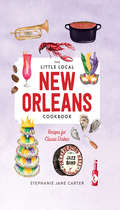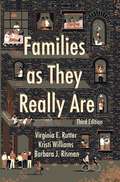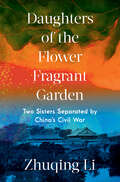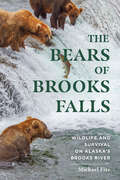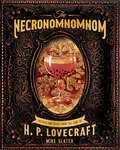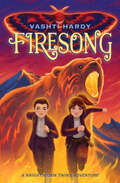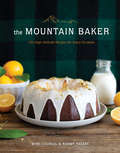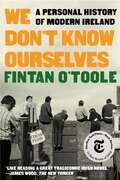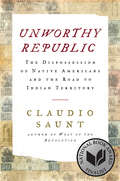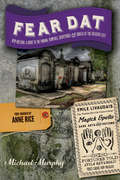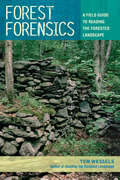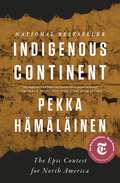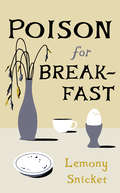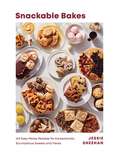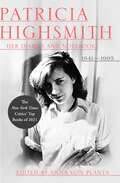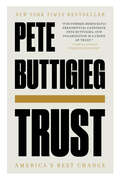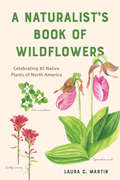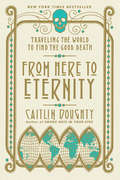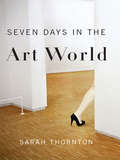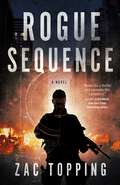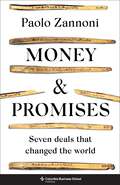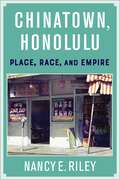- Table View
- List View
The Book: A Cover-to-Cover Exploration of the Most Powerful Object of Our Time
by Keith Houston"Everybody who has ever read a book will benefit from the way Keith Houston explores the most powerful object of our time. And everybody who has read it will agree that reports of the book’s death have been greatly exaggerated."— Erik Spiekermann, typographer We may love books, but do we know what lies behind them? In The Book, Keith Houston reveals that the paper, ink, thread, glue, and board from which a book is made tell as rich a story as the words on its pages—of civilizations, empires, human ingenuity, and madness. In an invitingly tactile history of this 2,000-year-old medium, Houston follows the development of writing, printing, the art of illustrations, and binding to show how we have moved from cuneiform tablets and papyrus scrolls to the hardcovers and paperbacks of today. Sure to delight book lovers of all stripes with its lush, full-color illustrations, The Book gives us the momentous and surprising history behind humanity’s most important—and universal—information technology.
Little Local New Orleans Cookbook
by Stephanie CarterThe Little Local New Orleans Cookbook brings the essential flavors of New Orleans to your table. From festive cocktails and finger foods to big celebration fare, you’ll find recipes for Sazerac and Hurricane cocktails, Creole gumbo, jambalaya, blackened redfish, king cake, sweet pralines, and other traditional dishes. Written by a regional food expert and beautifully illustrated, this little cookbook is the perfect keepsake for the Big Easy.
Families as They Really Are (Third Edition)
by Barbara J RismanThis purchase offers access to the digital ebook only.
Daughters of the Flower Fragrant Garden: Two Sisters Separated By China's Civil War
by Zhuqing LiA BookBrowse Best Nonfiction for Book Clubs in 2024 “Exceptional…[A] gripping narrative of one family divided by the ‘bamboo curtain.’” —Deirdre Mask, New York Times Book Review Sisters separated by war forge new identities as they are forced to choose between family, nation, and their own independence. Jun and Hong were scions of a once great southern Chinese family. Each other’s best friend, they grew up in the 1930s during the final days of Old China before the tumult of the twentieth century brought political revolution, violence, and a fractured national identity. By a quirk of timing, at the end of the Chinese Civil War, Jun ended up on an island under Nationalist control, and then settled in Taiwan, married a Nationalist general, and lived among fellow exiles at odds with everything the new Communist regime stood for on the mainland. Hong found herself an ocean away on the mainland, forced to publicly disavow both her own family background and her sister’s decision to abandon the party. A doctor by training, to overcome the suspicion created by her family circumstances, Hong endured two waves of “re-education” and internal exile, forced to work in some of the most desperately poor, remote areas of the country. Ambitious, determined, and resourceful, both women faced morally fraught decisions as they forged careers and families in the midst of political and social upheaval. Jun established one of U.S.-allied Taiwan’s most important trading companies. Hong became one of the most celebrated doctors in China, appearing on national media and honored for her dedication to medicine. Niece to both sisters, linguist and East Asian scholar Zhuqing Li tells her aunts’ story for the first time, honoring her family’s history with sympathy and grace. Daughters of the Flower Fragrant Garden is a window into the lives of women in twentieth-century China, a time of traumatic change and unparalleled resilience. In this riveting and deeply personal account, Li confronts the bitter political rivals of mainland China and Taiwan with elegance and unique insight, while celebrating her aunts’ remarkable legacies.
The Bears of Brooks Falls: Wildlife And Survival On Alaska's Brooks River
by Michael FitzA natural history and celebration of the famous bears and salmon of Brooks River. On the Alaska Peninsula, where exceptional landscapes are commonplace, a small river attracts attention far beyond its scale. Each year, from summer to early fall, brown bears and salmon gather at Brooks River to create one of North America’s greatest wildlife spectacles. As the salmon leap from the cascade, dozens of bears are there to catch them (with as many as forty-three bears sighted in a single day), and thousands of people come to watch in person or on the National Park Service’s popular Brooks Falls Bearcam. The Bears of Brooks Falls tells the story of this region and the bears that made it famous in three parts. The first forms an ecological history of the region, from its dormancy 30,000 years ago to the volcanic events that transformed it into the Valley of Ten Thousand Smokes. The central and longest section is a deep dive into the lives of the wildlife along the Brooks River, especially the bears and salmon. Readers will learn about the bears’ winter hibernation, mating season, hunting rituals, migration patterns, and their relationship with Alaska’s changing environment. Finally, the book explores the human impact, both positive and negative, on this special region and its wild population.
The Necronomnomnom: A Cookbook Of Eldritch Horror
by Red Duke Games, LLC Mike SlaterA Lovecraft-inspired cookbook with recipes to whet your appetite and threaten your sanity Reading about the slime- covered, non- Euclidean ruins of the sunken city of R’lyeh or the squamous, tentacled deity who slumbers there would make anyone hungry. Starting with the puns and working from there, authors Mike Slater and Thomas Roache have summoned forth 50 funny, bizarre, and horrible dishes such as: • The Deep Fried Deep One • Nog Sothoth • Cthus-Koos • The Great Old Buns • The Gin and Miskatonic Like H. P. Lovecraft’s Necronomicon, the legendary and forbidden book of the dead that is “alien to all sane and balanced readers,” this cookbook contains many dark (but still delicious) secrets within its pages. The book comes infested with sanity- melting and mouth- watering illustrations, as well as annotations full of crazed discoveries and desperate warnings about the recipes that brave readers will undertake.
Firesong: A Brightstorm Adventure (Brightstorm Twins #3)
by Vashti HardyIn this spirited third Brightstorm adventure, the twins journey north to protect the legendary earth-bear and to discover their family’s hidden history. Arthur and Maudie Brightstorm are back home in Lontown and finally settling in after their exhilarating—and secret—adventures in Erythea. Maudie’s sky-ak invention is a hit, and Harriet has just announced that she will share her sky-ship’s hydroelectric technology. But tensions are brewing. Pitch is becoming more and more difficult to mine, and the existence of super-sapient creatures on other continents threatens how the Explorers see themselves in the natural order of the world. When Arthur and Maudie begin hearing a strange song summoning them north—a song only they can hear—they know there’s an adventure waiting for them that may change the lives of everyone in the Wide. As the crew of the Aurora prepares for their trip, they’re joined by new members and old friends. But they’re not the only sky-ship journeying northward to uncover the region’s secrets. . . . Return to Vashti Hardy’s “marvelously imagined” world (Publisher's Weekly) in this sweeping and propulsive new addition to the Brightstorm series.
The Mountain Baker: 100 High-altitude Recipes For Every Occasion
by Mimi Council Kimmy FasaniFrom sweet and savory to fluffy and flaky—tried-and-tested recipes made for the 21st-century outdoor adventurer. Most recipes are developed and employed at or close to sea level, so what is a baker to do if they live 5,000 feet higher? In The Mountain Baker, longtime mountain dwellers Mimi Council and Kimmy Fasani share their recipes for successful cakes, cookies, muffins, breads, and beyond. With their firsthand experience, Council and Fasani are just the women to talk about the science behind high-altitude baking and cooking. From hearty eats and après snacks to decadent desserts, these recipes include conversions for sea-level kitchens, so home bakers can enjoy these treats wherever they cook: Double Black Diamond Brownies, Honey Graham Pancakes, Rosemary Parmesan Biscotti, Pizza Bread, Snow Day Cake, and more. With tips on why your alpine cakes are sinking or why your cookies are burning, this is the go-to resource to help readers fearlessly face their high-altitude kitchen or simply get in the outdoor spirit.
We Don't Know Ourselves: A Personal History of Modern Ireland
by Fintan O'TooleNEW YORK TIMES BESTSELLER NEW YORK TIMES • 10 BEST BOOKS OF THE YEAR NATIONAL BESTSELLER The Atlantic: 10 Best Books of 2022 Best Books of the Year: Washington Post, New Yorker, Salon, Foreign Affairs, New Statesman, Chicago Public Library, Vroman's “[L]ike reading a great tragicomic Irish novel.” —James Wood, The New Yorker “Masterful . . . astonishing.” —Cullen Murphy, The Atlantic "A landmark history . . . Leavened by the brilliance of O'Toole's insights and wit.” —Claire Messud, Harper’s Winner • 2021 An Post Irish Book Award — Nonfiction Book of the Year • from the judges: “The most remarkable Irish nonfiction book I’ve read in the last 10 years”; “[A] book for the ages.” A celebrated Irish writer’s magisterial, brilliantly insightful chronicle of the wrenching transformations that dragged his homeland into the modern world. Fintan O’Toole was born in the year the revolution began. It was 1958, and the Irish government—in despair, because all the young people were leaving—opened the country to foreign investment and popular culture. So began a decades-long, ongoing experiment with Irish national identity. In We Don’t Know Ourselves, O’Toole, one of the Anglophone world’s most consummate stylists, weaves his own experiences into Irish social, cultural, and economic change, showing how Ireland, in just one lifetime, has gone from a reactionary “backwater” to an almost totally open society—perhaps the most astonishing national transformation in modern history. Born to a working-class family in the Dublin suburbs, O’Toole served as an altar boy and attended a Christian Brothers school, much as his forebears did. He was enthralled by American Westerns suddenly appearing on Irish television, which were not that far from his own experience, given that Ireland’s main export was beef and it was still not unknown for herds of cattle to clatter down Dublin’s streets. Yet the Westerns were a sign of what was to come. O’Toole narrates the once unthinkable collapse of the all-powerful Catholic Church, brought down by scandal and by the activism of ordinary Irish, women in particular. He relates the horrific violence of the Troubles in Northern Ireland, which led most Irish to reject violent nationalism. In O’Toole’s telling, America became a lodestar, from John F. Kennedy’s 1963 visit, when the soon-to-be martyred American president was welcomed as a native son, to the emergence of the Irish technology sector in the late 1990s, driven by American corporations, which set Ireland on the path toward particular disaster during the 2008 financial crisis. A remarkably compassionate yet exacting observer, O’Toole in coruscating prose captures the peculiar Irish habit of “deliberate unknowing,” which allowed myths of national greatness to persist even as the foundations were crumbling. Forty years in the making, We Don’t Know Ourselves is a landmark work, a memoir and a national history that ultimately reveals how the two modes are entwined for all of us.
Unworthy Republic: The Dispossession Of Native Americans And The Road To Indian Territory
by Claudio SauntWinner of the 2021 Bancroft Prize and the 2021 Ridenhour Book Prize Finalist for the 2020 National Book Award for Nonfiction Named a Top Ten Best Book of 2020 by the Washington Post and Publishers Weekly and a New York Times Critics' Top Book of 2020 A masterful and unsettling history of “Indian Removal,” the forced migration of Native Americans across the Mississippi River in the 1830s and the state-sponsored theft of their lands. In May 1830, the United States launched an unprecedented campaign to expel 80,000 Native Americans from their eastern homelands to territories west of the Mississippi River. In a firestorm of fraud and violence, thousands of Native Americans lost their lives, and thousands more lost their farms and possessions. The operation soon devolved into an unofficial policy of extermination, enabled by US officials, southern planters, and northern speculators. Hailed for its searing insight, Unworthy Republic transforms our understanding of this pivotal period in American history.
Fear Dat New Orleans: A Guide To The Voodoo, Vampires, Graveyards And Ghosts Of The Crescent City
by Michael MurphyBy the author of the acclaimed Eat Dat, a brand-new guide to New Orleans's scary side, from Voodoo rituals to historic cemeteries and haunted mansions Fear Dat New Orleans explores the eccentric and often macabre dark corners of America’s most unique city. In addition to detailed histories of bizarre burials, ghastly murders, and the greatest concentration of haunted places in America, Fear Dat features a “bone watcher’s guide” with useful directions of who’s buried where, from Marie Laveau to Ruthie the Duck Girl. You’ll also find where to buy the most authentic gris-gris or to get the best psychic reading. The Huffington Post tagged Michael Murphy’s first book Eat Dat, about the city’s food culture, the #1 “essential” book to read before coming to New Orleans. New Orleans Living called it “both reverent and irreverent, he manages to bring a sense of humor to serious eating—and that’s what New Orleans is all about.” In Fear Dat, Murphy brings similar insights and irreverence to New Orleans voodoo, vampires, graveyards, and ghosts.
Forest Forensics: A Field Guide To Reading The Forested Landscape
by Tom WesselsTake some of the mystery out of a walk in the woods with this new field guide from the author of Reading the Forested Landscape. Thousands of readers have had their experience of being in a forest changed forever by reading Tom Wessels's Reading the Forested Landscape. Was this forest once farmland? Was it logged in the past? Was there ever a major catastrophe like a fire or a wind storm that brought trees down? Now Wessels takes that wonderful ability to discern much of the history of the forest from visual clues and boils it all down to a manageable field guide that you can take out to the woods and use to start playing forest detective yourself. Wessels has created a key—a fascinating series of either/or questions—to guide you through the process of analyzing what you see. You’ll feel like a woodland Sherlock Holmes. No walk in the woods will ever be the same.
Indigenous Continent: The Epic Contest for North America
by Pekka HämäläinenNATIONAL BESTSELLER New York Times Book Review • 100 Notable Books of 2022 Best Books of 2022 — New Yorker, Kirkus Reviews Longlisted for the Andrew Carnegie Medal for Excellence “I can only wish that, when I was that lonely college junior and was finishing Bury My Heart at Wounded Knee, I’d had Hämäläinen’s book at hand.” —David Treuer, The New Yorker “[T]he single best book I have ever read on Native American history.” —Thomas E. Ricks, New York Times Book Review A prize-winning scholar rewrites 400 years of American history from Indigenous perspectives, overturning the dominant origin story of the United States. There is an old, deeply rooted story about America that goes like this: Columbus “discovers” a strange continent and brings back tales of untold riches. The European empires rush over, eager to stake out as much of this astonishing “New World” as possible. Though Indigenous peoples fight back, they cannot stop the onslaught. White imperialists are destined to rule the continent, and history is an irreversible march toward Indigenous destruction. Yet as with other long-accepted origin stories, this one, too, turns out to be based in myth and distortion. In Indigenous Continent, acclaimed historian Pekka Hämäläinen presents a sweeping counternarrative that shatters the most basic assumptions about American history. Shifting our perspective away from Jamestown, Plymouth Rock, the Revolution, and other well-trodden episodes on the conventional timeline, he depicts a sovereign world of Native nations whose members, far from helpless victims of colonial violence, dominated the continent for centuries after the first European arrivals. From the Iroquois in the Northeast to the Comanches on the Plains, and from the Pueblos in the Southwest to the Cherokees in the Southeast, Native nations frequently decimated white newcomers in battle. Even as the white population exploded and colonists’ land greed grew more extravagant, Indigenous peoples flourished due to sophisticated diplomacy and leadership structures. By 1776, various colonial powers claimed nearly all of the continent, but Indigenous peoples still controlled it—as Hämäläinen points out, the maps in modern textbooks that paint much of North America in neat, color-coded blocks confuse outlandish imperial boasts for actual holdings. In fact, Native power peaked in the late nineteenth century, with the Lakota victory in 1876 at Little Big Horn, which was not an American blunder, but an all-too-expected outcome. Hämäläinen ultimately contends that the very notion of “colonial America” is misleading, and that we should speak instead of an “Indigenous America” that was only slowly and unevenly becoming colonial. The evidence of Indigenous defiance is apparent today in the hundreds of Native nations that still dot the United States and Canada. Necessary reading for anyone who cares about America’s past, present, and future, Indigenous Continent restores Native peoples to their rightful place at the very fulcrum of American history.
Poison for Breakfast
by Lemony SnicketWashington Post Bestseller A new stand-alone adventure—appropriate for all ages—by Lemony Snicket, one of the twenty-first century’s most beloved authors. In the years since this publishing house was founded, we have worked with an array of wondrous authors who have brought illuminating clarity to our bewildering world. Now, instead, we bring you Lemony Snicket. Over the course of his long and suspicious career, Mr. Snicket has investigated many things, including villainy, treachery, conspiracy, ennui, and various suspicious fires. In this book, he is investigating his own death. Poison for Breakfast is a different sort of book than others we have published, and from others you may have read. It is different from other books Mr. Snicket has written. It could be said to be a book of philosophy, something almost no one likes, but it is also a mystery, and many people claim to like those. Certainly Mr. Snicket didn’t relish the dreadful task of solving it, but he had no choice. It was put in front of him, right there, on his plate.
Snackable Bakes: 100 Easy-peasy Recipes For Exceptionally Scrumptious Sweets And Treats
by Jessie SheehanWhat is a snackable bake? An utterly scrumptious, round-the-clock treat that can be assembled in 20 minutes or less! A New York Times' Best Cookbook of the Year One-bowl, simple, fast, easy-peasy baking recipes made Jessie Sheehan’s TikTok videos a hit, with millions of views and plenty of fans. Her lickety-split recipes were a game-changing addition to foodie culture when she joined the platform. Sheehan’s fuss-free approach, dynamic energy, and kitchen-savvy advice are all on display in this must-have new cookbook. Here, Sheehan explodes the snackable sweets scene with 100 recipes that minimize time but maximize fun. Peppermint Stick No-Churn Ice Cream, Summer Peach Fritters, Extra Crumb Snacking Cake, Deeply Chocolaty Baked Donuts with Buttermilk Glaze and Sprinkles are just some of the treats that come to life in this crave-worthy cookbook. With vibrant photography and enviable flavors, this of-the-moment book will be loved by anyone with an impatient sweet tooth.
Patricia Highsmith: 1941-1995
by Patricia HighsmithNew York Times • Times Critics Top Books of 2021 The Times (of London) • Best Books of the Year Excerpted in The New Yorker Profiled in The Los Angeles Times Publishing for the centenary of her birth, Patricia Highsmith’s diaries “offer the most complete picture ever published” of the canonical author (New York Times). Relegated to the genre of mystery during her lifetime, Patricia Highsmith is now recognized as one of “our greatest modernist writers” (Gore Vidal). Beloved by fans who were unaware of the real psychological turmoil behind her prose, the famously secretive Highsmith refused to authorize a biography, instead sequestering herself in her Switzerland home in her final years. Posthumously, her devoted editor Anna von Planta discovered her diaries and notebooks in 1995, tucked in a closet—with tantalizing instructions to be read. For years thereafter, von Planta meticulously culled from over eight thousand pages to help reveal the inscrutable figure behind the legendary pen. Beginning with her junior year at Barnard in 1941, Highsmith ritualistically kept a diary and notebook—the former to catalog her day, the latter to brainstorm stories and hone her craft. This volume weaves diary and notebook simultaneously, exhibiting precisely how Highsmith’s personal affairs seeped into her fiction—and the sheer darkness of her own imagination. Charming yet teetering on the egotistical, young “Pat” lays bare her dizzying social life in 1940s Greenwich Village, barhopping with Judy Holliday and Jane Bowles, among others. Alongside Flannery O’Conner and Chester Himes, she attended—at the recommendation of Truman Capote—the Yaddo artist colony in 1948, where she drafted Strangers on a Train. Published in 1950 and soon adapted by Alfred Hitchcock, this debut novel brought recognition and brief financial security, but left a heartsick Highsmith agonizing: “What is the life I choose?” Providing extraordinary insights into gender and sexuality in mid-twentieth-century America, Highsmith’s diaries convey her euphoria writing The Price of Salt (1951). Yet her sophomore novel would have to be published under a pseudonym, so as not to tarnish her reputation. Indeed, no one could anticipate commercial reception for a novel depicting love between two women in the McCarthy era. Seeking relief from America, Highsmith catalogs her peripatetic years in Europe, subsisting on cigarettes and growing more bigoted and satirical with age. After a stay in Positano with a new lover, she reflects in her notebooks on being an expat, and gleefully conjures the unforgettable The Talented Mr. Ripley (1955); it would be this sociopathic antihero who would finally solidify her true fame. At once lovable, detestable, and mesmerizing, Highsmith put her turbulent life to paper for five decades, acutely aware there must be “a few usable things in literature.” A memoir as significant in our own century as Sylvia Plath’s journals and Simone de Beauvoir’s writings were to another time, Patricia Highsmith: Her Diaries and Notebooks is an historic work that chronicles a woman’s rise against the conventional tide to unparalleled literary prominence.
When Evil Lived in Laurel: The White Knights And The Murder Of Vernon Dahmer
by Curtis WilkieOne of NPR's Best Books of the Year Finalist for the 2022 Edgar Award for Best Fact Crime The inside story of how a courageous FBI informant helped to bring down the KKK organization responsible for a brutal civil rights–era killing. By early 1966, the work of Vernon Dahmer was well known in south Mississippi. A light-skinned Black man, he was a farmer, grocery store owner, and two-time president of the Forrest County chapter of the NAACP. He and Medgar Evers founded a youth NAACP chapter in Hattiesburg, and for years after Evers’s assassination Dahmer was the chief advocate for voting rights in a county where Black registration was shamelessly suppressed. This put Dahmer in the crosshairs of the White Knights, with headquarters in nearby Laurel. Already known as one of the most violent sects of the KKK in the South, the group carried out his murder in a raid that burned down his home and store. A year before, Tom Landrum, a young, unassuming member of a family with deep Mississippi roots, joined the Klan to become an FBI informant. He penetrated the White Knights’ secret circles, recording almost daily journal entries. He risked his life, and the safety of his young family, to chronicle extensively the clandestine activities of the Klan. Veteran journalist Curtis Wilkie draws on his exclusive access to Landrum’s journals to re-create these events—the conversations, the incendiary nighttime meetings, the plans leading up to Dahmer’s murder and its erratic execution—culminating in the conviction and imprisonment of many of those responsible for Dahmer’s death. In riveting detail, When Evil Lived in Laurel plumbs the nature and harrowing consequences of institutional racism, and brings fresh light to this chapter in the history of civil rights in the South—one with urgent implications for today.
Trust: America's Best Chance
by Pete ButtigiegSecretary of Transportation Pete Buttigieg demonstrates how a breakdown of trust has brought our nation to the brink of disaster—and how its restoration for all can reclaim America’s future. In a century warped by terrorism, Trumpist populism, systemic racism, financial collapse, and a global pandemic, trust—in our institutions, in each other, and in the American project itself—has precipitously eroded. We are now experiencing the disastrous consequences of a “crisis in trust,” writes Pete Buttigieg, former presidential candidate and best-selling author of Shortest Way Home. In this arresting, impassioned account, Buttigieg contends that our success—or failure—in confronting the greatest challenges of the decade will rest on whether we can effectively cultivate, deepen, and, where necessary, repair the networks of trust that are now endangered, or for so many, never even existed. Interweaving history, political philosophy, and affecting passages of memoir, Trust is an urgent call to foster an “American way of trust.”
A Naturalist's Book of Wildflowers: Celebrating 85 Native Plants In North America
by Laura C. MartinA charmingly illustrated keepsake and guide to native, wild plants of North America. In this exquisitely detailed naturalist’s handbook, Laura C. Martin provides profiles of 85 wild plants and flowers found across North America, each accompanied by lovingly illustrated and charming watercolor paintings. With dozens of notes, arrows, and details, each chapter encourages the reader to look at the plants as a naturalist would—opening up a whole new way of seeing nature. Martin gives details on where the plants can be found, how they grow, how to identify them, and what natural properties they each have. The handbook features plants from across North America, including the Purple Coneflower, found along the East Coast from Quebec to Florida, and the Opuntia (prickly pear) cacti found in Mexico and America’s Southwest. In addition to the wildflower profiles, readers will find information on growing native plants, instructions for plant crafts, tips for conservation, and ideas for activities with children. They’ll also discover recipes for teas, herb mixes, tinctures, and salves using the plants described. Crafts and activities include making dyes, simple baskets, wreaths, and crowns. A Naturalist’s Book of Wildflowers is a gift book and field guide in one, with its treasure trove of handy information and beautiful colored drawings.
From Here to Eternity: Traveling the World to Find the Good Death
by Caitlin DoughtyA New York Times and Los Angeles Times Bestseller “Doughty chronicles [death] practices with tenderheartedness, a technician’s fascination, and an unsentimental respect for grief.” —Jill Lepore, The New Yorker Fascinated by our pervasive fear of dead bodies, mortician Caitlin Doughty embarks on a global expedition to discover how other cultures care for the dead. From Zoroastrian sky burials to wish-granting Bolivian skulls, she investigates the world’s funerary customs and expands our sense of what it means to treat the dead with dignity. Her account questions the rituals of the American funeral industry—especially chemical embalming—and suggests that the most effective traditions are those that allow mourners to personally attend to the body of the deceased. Exquisitely illustrated by artist Landis Blair, From Here to Eternity is an adventure into the morbid unknown, a fascinating tour through the unique ways people everywhere confront mortality.
Seven Days in the Art World
by Sarah ThorntonA fly-on-the-wall account of the smart and strange subcultures that make, trade, curate, collect, and hype contemporary art. The art market has been booming. Museum attendance is surging. More people than ever call themselves artists. Contemporary art has become a mass entertainment, a luxury good, a job description, and, for some, a kind of alternative religion. In a series of beautifully paced narratives, Sarah Thornton investigates the drama of a Christie's auction, the workings in Takashi Murakami's studios, the elite at the Basel Art Fair, the eccentricities of Artforum magazine, the competition behind an important art prize, life in a notorious art-school seminar, and the wonderland of the Venice Biennale. She reveals the new dynamics of creativity, taste, status, money, and the search for meaning in life. A judicious and juicy account of the institutions that have the power to shape art history, based on hundreds of interviews with high-profile players, Thornton's entertaining ethnography will change the way you look at contemporary culture.
Rogue Sequence: A Novel (Ander Rade #1)
by Zac ToppingIt's 2091 and independent contract companies around the world are producing genetically modified soldiers…to be sold to the highest bidders.Ander Rade is a super-soldier, a genetically engineered living weapon, and has been dutifully following orders since he gave himself to Scythe Industries’ Gene-Mod Program several years ago. But when a mission goes sideways, he’s captured, imprisoned, and forced into brutally violent fighting pits for the better part of the next decade…until agents from the Genetic Compliance Department of the United American Provinces appear in the visitors room.Things have changed since Rade was captured. Shortly after his incarceration, the World Unity Council banned human genetic engineering and deemed all modified individuals a threat to society. Overnight, an entire subculture of people became outlaws simply for existing. But instead of leaving Rade locked behind bars, the GCD agents have come with an offer: Freedom in exchange for his help tracking down one of his former teammates from that ill-fated mission all those years ago.It's an offer Rade can't refuse, but he soon realizes the situation is far more volatile than anyone had anticipated, and must take matters into his own hands as he tries to figure out whose side he’s really on, and why?At the Publisher's request, this title is being sold without Digital Rights Management Software (DRM) applied.
Yesterdays
by Harold Sonny LadooA rediscovered classic, Yesterdays turns colonialism on its head.Originally published in 1974, Yesterdays is nominally the story of one man’s attempt to launch a Hindu Mission from Trinidad to convert the heathen Christians of Canada. Yet this conceit quickly derails into a ribald, outrageous portrait of West Indian village life, and a prescient, proto-parody of what would become the archetypal 'immigrant story.' Sacred cows both figurative and literal are skewered in a series of hilarious and increasingly bawdy encounters between villagers who gossip, cheat, and steal, but also form a balanced, if chaotic, collectivity. Yesterdays is one of the great lost English-language novels of the previous century—perhaps ahead of its own time upon its initial release, but sure to appeal to 21st-century audiences who will appreciate its startling prescience, linguistic inventiveness, as well as its bold singularity amid a canon glutted with paint-by-numbers respectability."Yesterdays upends conventional narratives that find sexual liberation in the postindustrial city. Ladoo's agrarian villagers inhabit the fullness of their complex humanities in audaciously funny and often uncomfortable ways, and are radically at ease with their fluid sexual appetites. An under-appreciated gem, his novel is as much a testament to Ladoo's skillful observation and rendering of the world that surrounded him as it is to the value of being tellers of our own stories." – Andil Gosine, author of Nature's Wild: Love, Sex and Law in the Caribbean"Yesterdays is the novel, underappreciated on its initial release and since forgotten, that should have charted a deviant, audacious path through the staid self-seriousness of Canadian literature. Let's hope there's still time." – Pasha Malla, author of All You Can Kill
Money and Promises: Seven Deals That Changed the World
by Paolo ZannoniWhere did modern banking come from—and how does this history help us understand financial crises?In the twelfth century, Pisa was a thriving metropolis, a powerhouse of global trade, and a city that stood at the center of medieval Europe. But Pisa had a problem: Money came in the form of coins, and they were becoming scarce. In the face of this financial and monetary crisis, the foundations of modern banking were laid.In Money and Promises, the distinguished banker, executive, and historian Paolo Zannoni examines the complex relationship between states and banks that has changed the world. Drawing on in-depth archival research, he explores seven case studies: the republic of Pisa, seventeenth-century Venice, the early years of the Bank of England, imperial Spain, the Kingdom of Naples, the nascent United States during the American Revolution, and Bolshevik Russia in 1917 through 1923. Zannoni also tells the story of how the Continental Congress established the first public bank in North America, exploring the roles of Thomas Jefferson, Benjamin Franklin, and Alexander Hamilton. Spanning many countries, political systems, and historical eras, this book shows that at the heart of these institutions is an intricate exchange of debts and promises that shaped the modern world as we know it.
Chinatown, Honolulu: Place, Race, and Empire
by Nancy E. RileyThe Chinese experience in Hawai‘i has long been told as a story of inclusion and success. During the Cold War, the United States touted the Chinese community in Hawai‘i as an example of racial harmony and American opportunity, claiming that all ethnic groups had the possibility to attain middle-class lives. Today, Honolulu’s Chinatown is not only a destination for tourism and consumption but also a celebration of Chinese accomplishments, memorializing past discrimination and present prominence within a framework of multiculturalism. This narrative, however, conceals many other histories and processes that played crucial roles in shaping Chinatown.This book offers a critical account of the history of Chinese in Hawai‘i from the mid-nineteenth century to the present in this context of U.S. empire, settler colonialism, and racialization. Nancy E. Riley foregrounds elements that are often left out of narratives of Chinese history in Hawai‘i, particularly the place of Native Hawaiians, geopolitics and U.S. empire building, and the ongoing construction of race and whiteness. Tracing how Chinatown became a site of historical remembrance, she argues that it is also used to reinforce the ideology of neoliberal multiculturalism, which upholds racial hierarchy by lauding certain ethnic groups while excluding others. An insightful and in-depth analysis of the story of Honolulu’s Chinatown, this book offers new perspectives on the making of the racial landscape of Hawai‘i and the United States more broadly.

